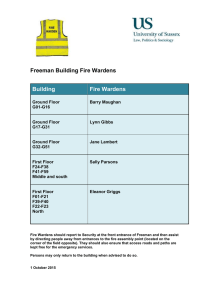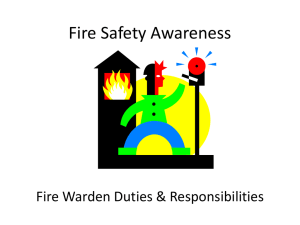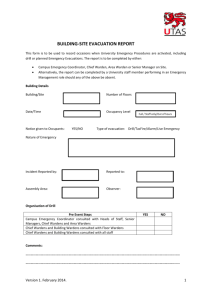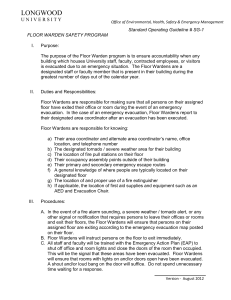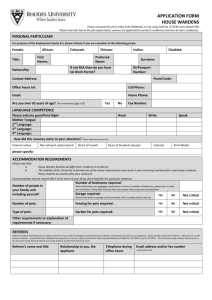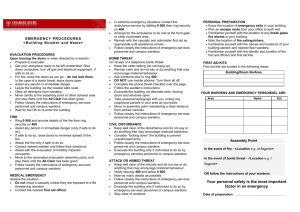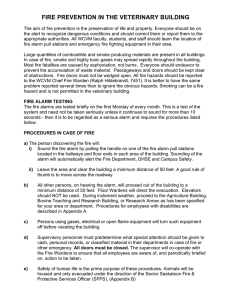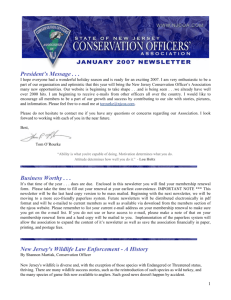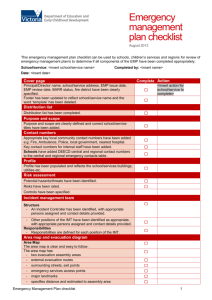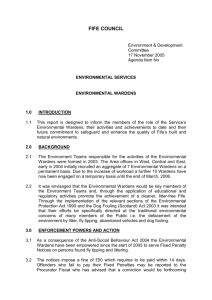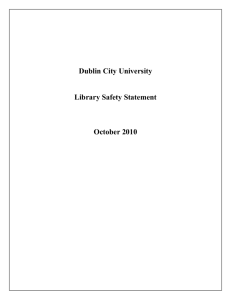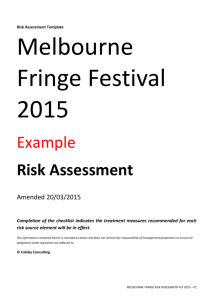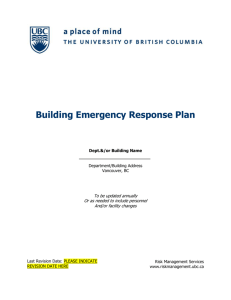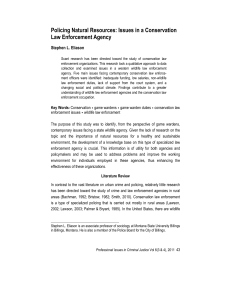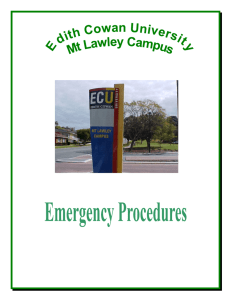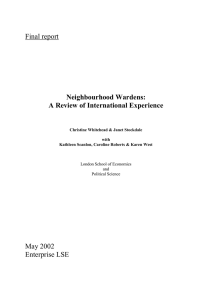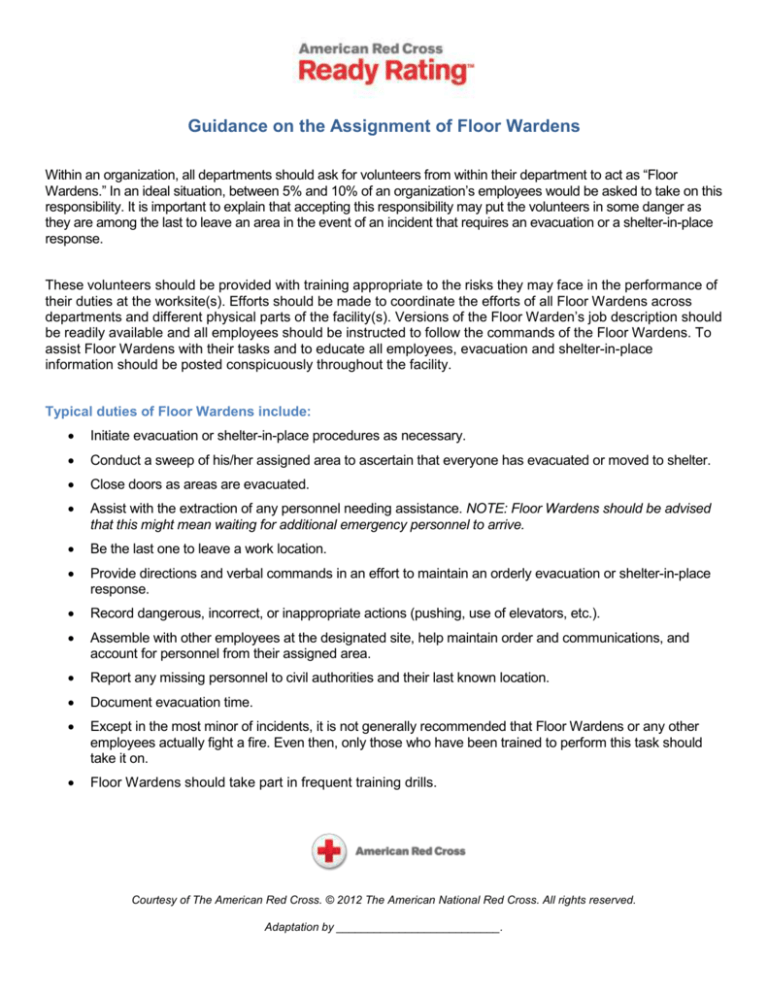
Guidance on the Assignment of Floor Wardens
Within an organization, all departments should ask for volunteers from within their department to act as “Floor
Wardens.” In an ideal situation, between 5% and 10% of an organization’s employees would be asked to take on this
responsibility. It is important to explain that accepting this responsibility may put the volunteers in some danger as
they are among the last to leave an area in the event of an incident that requires an evacuation or a shelter-in-place
response.
These volunteers should be provided with training appropriate to the risks they may face in the performance of
their duties at the worksite(s). Efforts should be made to coordinate the efforts of all Floor Wardens across
departments and different physical parts of the facility(s). Versions of the Floor Warden’s job description should
be readily available and all employees should be instructed to follow the commands of the Floor Wardens. To
assist Floor Wardens with their tasks and to educate all employees, evacuation and shelter-in-place
information should be posted conspicuously throughout the facility.
Typical duties of Floor Wardens include:
Initiate evacuation or shelter-in-place procedures as necessary.
Conduct a sweep of his/her assigned area to ascertain that everyone has evacuated or moved to shelter.
Close doors as areas are evacuated.
Assist with the extraction of any personnel needing assistance. NOTE: Floor Wardens should be advised
that this might mean waiting for additional emergency personnel to arrive.
Be the last one to leave a work location.
Provide directions and verbal commands in an effort to maintain an orderly evacuation or shelter-in-place
response.
Record dangerous, incorrect, or inappropriate actions (pushing, use of elevators, etc.).
Assemble with other employees at the designated site, help maintain order and communications, and
account for personnel from their assigned area.
Report any missing personnel to civil authorities and their last known location.
Document evacuation time.
Except in the most minor of incidents, it is not generally recommended that Floor Wardens or any other
employees actually fight a fire. Even then, only those who have been trained to perform this task should
take it on.
Floor Wardens should take part in frequent training drills.
Courtesy of The American Red Cross. © 2012 The American National Red Cross. All rights reserved.
Adaptation by __________________________.
When assessing a real or potential emergency situation the Floor Warden should take the following
factors into consideration:
Facility layout and physical characteristics
Occupancy, personnel distribution around the worksite, and the physical makeup and characteristics of the
personnel onsite
The capabilities of local first responders, especially reaction time
Availability of community response and aid programs
Location of drinkable water and first aid equipment
Worksite exposures and hazards such as open flames, location of toxic or caustic materials, explosives, or
other possible hazards (e.g., unfinished construction areas)
Traffic patterns and outside weather conditions
Other characteristics of the local neighborhood
Other issues that make each site unique, such as the pathways to assembly sites
Courtesy of The American Red Cross. © 2012 The American National Red Cross. All rights reserved.
Adaptation by __________________________.

